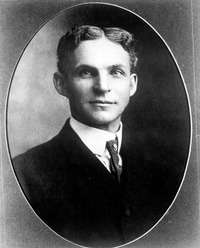From the turn of the 20th to the turn of the 21st centuries, humankind experienced the greatest leaps in technological advances in recorded history. From horse-drawn buggies to space travel, human intelligence and creativity took us from a plodding, linear existence to soaring, exponential possibilities. Books like Alvin Toffler’s Future Shock first chronicled this geometric explosion of knowledge to Peter Diamandis’ Bold and Abundance took us the rest of the way toward the melding of humans and machines to remake the humanity that brought us here.
No need to recount those books or to re-tread that ground here. Rather, recognize that the same human knowledge and creativity that got us here will get us there. So with the rapid acquisition of new knowledge – some estimates say knowledge now doubles every two years – it is important that we identify our journey and catalogue it individually and collectively.
We live in the greatest transfer of knowledge in all of human history.
The whole of human knowledge is a big bite for anybody, especially you and me operating in isolation. However, taken one person, one company, one organization at a time, we can preserve what we’ve done so we can replicate it. To many practitioners at the organizational level, that is a training function. But a full knowledge capture goes beyond the practical and immediate application of developing a training program for employees to continue best practices. Each organization has a history, a culture and knowledge that went before that may have lost its current relevance but not its importance. It is that broader vision of knowledge capture that this book addresses.
As we rapidly move toward artificial intelligence and computer-generated activities that simulate human functions, it behooves us more than ever to preserve the knowledge, skills and attitudes that makes us essentially human if for no other reason than to create an accurate history.
Having defined your vision and the mission, preserve corporate knowledge, assess your circumstance and judge the value of what you would labor and spend valuable resources to capture.
What valuable knowledge are you preserving?
Please comment below and tell us about your contribution to human wisdom.
Photo by Neven Krcmarek on Unsplash








